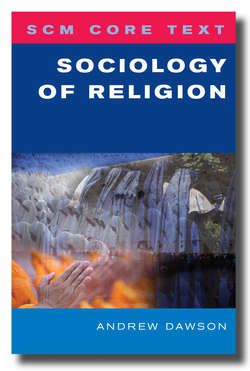Читать книгу SCM Core Text Sociology of Religion - Andrew Dawson - Страница 40
На сайте Литреса книга снята с продажи.
Methodological considerations
ОглавлениеWhen engaging religion in respect of its various social contexts, sociologists bring to bear a raft of applied methods (Brink, 1995, pp. 461–75). Choosing an applied research method is very much like deciding upon what to have for breakfast. One must first choose what is going to be eaten and then one must decide how it is to be prepared for the plate. If it is to be eggs, for example, are they to come fried, scrambled, poached or hard-boiled? Whatever the choice, in each case a different mode of preparation requires a different set of implements. I use this image to underline how different research methods do not simply acquire data but, like the frying pan, whisk or pot of boiling water, they prepare what is to be consumed in one way rather than another. As with the egg that arrives on the plate, data is cooked relative to the methods used in its acquisition and preparation. There is, in effect, no such thing as raw data. Choice of research method, then, is never simply a question of ‘What data needs acquiring?’ but also of ‘How best to acquire the necessary data in the most appropriate form?’
Different applied methods are more or less suited to different kinds of social terrain. Examination of patterns in movement between different religions, for example, needs to gather data in respect of the amount of switching actually taking place and the profiles (e.g. sex, age, relational status, profession, religious affiliation) of those doing the switching. Once acquired, this data can then be examined for particular trends (such as increased transit by North American Protestants) or compared with data from other social contexts (for example Brazil, where Roman Catholics are more prone to switching) and historical periods (where religious transit was much less likely). Given the nature of the data sought in respect of this issue, large-scale (quantitative) survey methods such as questionnaires lend themselves to the task.
If, however, one wanted to explore the implications of religious transit for the individuals doing the switching or the institutions acquiring or losing members, then other methods may prove more effective in acquiring and engaging the necessary data. Exploration of the personal motives behind switching and the impact of transit upon individual religiosity are best explored through methods geared towards obtaining data of a more intimate (qualitative) nature. In this instance, qualitative methods such as one-to-one interviews are particularly helpful. While interviews may also prove useful to the study of institutional responses to religious switching (as in respect of relaxation or tightening of membership rules), other methods of data acquisition will be required. The researcher may, for example, look for evidence of modified institutional behaviour expressed through changes in official publicity which seek to present a more inclusive or exclusive attitude in respect of would-be religious transients. The method of discourse analysis is one way of exploring changes in the presentational narratives of religious institutions. Alternatively, data evidencing the organizational impact of religious switching might be looked for through an examination of associational practices such as formal ritual activity or informal modes of interaction. First-hand engagement with the associational dimension of religion is a particular strength of the method commonly termed ‘participant observation’.
The pursuit, acquisition and interpretation of empirical data gathered through applied methods are directly informed by sociological theory. In the case of religious transit, for example, the concept of ‘individualization’ may be used to explain the ways in which modern society enables switching. Modern dynamics do this by progressively undermining individual–corporate allegiances (e.g. familial, religious, cultural), which were once thought to be fixed and exclusive (Beck and Beck-Gernsheim, 2002). In the same vein, the concept of ‘bricolage’ can be employed to explore the subjective implications of religious transit. It does so by engaging individual religiosity as it is fashioned through the subjective appropriation of practices, symbols and values from a variety of different, if not contrasting, contexts (Dawson, A., 2007, pp. 129–57). The institutional implications of religious switching might likewise be explored through the articulation of concepts relating to the public image which organizations project (such as ‘collective impression management’) and their ability to attract religious consumers through careful packaging of their spiritual goods (Finke, 1997, pp. 45–64).
Choice of applied methods and the concepts used to interpret the data they acquire are themselves subject to the overarching theoretical paradigm within which they sit. As noted in Chapter 1, sociologists conceptualize society, its dimensions and their respective interactions in a wide variety of ways. Add to this aforementioned disagreements in respect of how religion might be defined (and, by extension, where it is to be found and how it is to be engaged), and one can begin to appreciate something of the wonderfully variegated character of the sociology of religion. As with sociology in general, the most fruitful readings of the sociology of religion appreciate the implications of the definitions used, methods applied, hermeneutical concepts employed, and the overarching theoretical presuppositions which inform the what, the how and the why.
